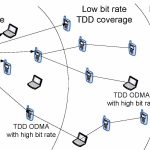Switching, in communications, equipment and techniques for enabling any station in a communications system to be connected with any other station. Switching is an essential component of telephone, telegraph, data-processing, and other technologies in which it is necessary to deal rapidly with large amounts of information.
Telegraph
Telegraph, any device or system that allows the transmission of information by coded signal over distance. Many telegraphic systems have been used over the centuries, but the term is most often understood to refer to the electric telegraph, which was developed in the mid-19th century and for more than 100 years was the principal means of transmitting printed information by wire or radio wave.

White House Telegraph Room, 1898E.C. Heasley, Jules A. Rodier, and Major Montgomery working in the White House’s Telegraph Room—which was set up to receive news of the Spanish-American War—in Washington, D.C., 1898.
Preelectric Telegraph Systems
The word telegraph is derived from the Greek words tele, meaning “distant,” and graphein, meaning “to write.” It came into use toward the end of the 18th century to describe an optical semaphore system developed in France. However, many types of telegraphic communication have been employed since before recorded history. The earliest methods of communication at a distance made use of such media as smoke, fire, drums, and reflected rays of the Sun. Visual signals given by flags and torches were used for short-range communication and continued to be utilized well into the 20th century, when the two-flag semaphore system was widely used, particularly by the world’s navies.
Before the development of the electric telegraph, visual systems were used to convey messages over distances by means of variable displays. One of the most successful of the visual telegraphs was the semaphore developed in France by the Chappe brothers, Claude and Ignace, in 1791. This system consisted of pairs of movable arms mounted at the ends of a crossbeam on hilltop towers. Each arm of the semaphore could assume seven angular positions 45° apart, and the horizontal beam could tilt 45° clockwise or counterclockwise. In this manner it was possible to represent numbers and the letters of the alphabet. Chains of these towers were built to permit transmission over long distances. The towers were spaced at intervals of 5 to 10 km (3 to 6 miles), and a signaling rate of three symbols per minute could be achieved.

optical telegraph
Another widely used visual telegraph was developed in 1795 by George Murray in England. In Murray’s device, characters were sent by opening and closing various combinations of six shutters. This system rapidly caught on in England and in the United States, where a number of sites bearing the name Telegraph Hill or Signal Hill can still be found, particularly in coastal regions. Visual telegraphs were completely replaced by the electric telegraph by the middle of the 19th century.


